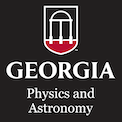Dr. Susanne Ullrich will be hosting Dr. Gary Douberly of the University of Georgia Department of Chemistry this week. His talk is entitled "Spectroscopy of Molecular Clusters in 0.4 Kelvin Helium Nanodroplets."
Helium nanodroplet isolation (HENDI) has proven to be a versatile technique for many forms of molecular spectroscopy. Helium nanodroplets provide a medium for studying at 0.4 Kelvin, the structure and dynamics of novel systems such as biomolecules, free- radicals, metal clusters, and molecular clusters. A hallmark of HENDI spectroscopy is the appearance of rotational fine structure in the vibrational spectra of molecules and complexes dissolved in the weakly interacting matrix. As a result of the low temperature of the droplet matrix, the vibrational band contours of most polyatomic molecules or clusters span only approximately 1 cm-1. Consequently, vibrational bands are typically resolved, even if a mixture of cluster sizes is present in the droplet beam. With few exceptions, when comparisons are available, the vibrational band origins of helium solvated species are shifted little from their respective gas phase values. Hence, novel complexes formed in the droplets can be treated as being isolated, such that their vibrational spectra can be directly compared to the predictions of ab initio theory.
In this talk, I will discuss the process by which molecular clusters are formed within the helium droplets. Quite often, metastable species are formed, providing us with the opportunity to characterize regions of the potential energy surface far from the global minimum. Molecular clusters are formed by the sequential "pick-up" of monomers by the droplets. As the fragments of the cluster approach one another in the droplet, long range electrostatic interactions tend to pre-orient and funnel the fragments into one of potentially many minima on the potential surface. I will also discuss recent progress towards the characterization of high-energy metastable species with infrared laser spectroscopy and the prospects for studying the laser driven chemistry of pre-reactive species using the HENDI methodology.


